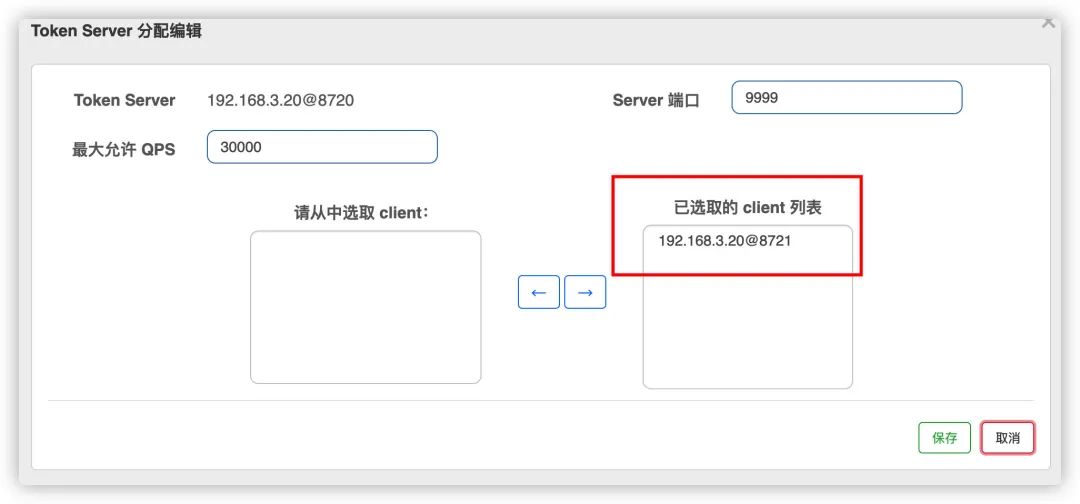回复
Sentinel集群限流探索(三)
wg204wg
发布于 2022-6-13 17:37
浏览
0收藏
因为有流量之后控制台才能看到限流的情况,所以用官方给的限流测试代码修改一下,放到Springboot启动类中,触发限流规则的初始化。
@SpringBootApplication
public class DemoApplication {
public static void main(String[] args) {
SpringApplication.run(DemoApplication.class, args);
new FlowQpsDemo();
}
}测试限流代码:
public class FlowQpsDemo {
private static final String KEY = "test_res";
private static AtomicInteger pass = new AtomicInteger();
private static AtomicInteger block = new AtomicInteger();
private static AtomicInteger total = new AtomicInteger();
private static volatile boolean stop = false;
private static final int threadCount = 32;
private static int seconds = 60 + 40;
public FlowQpsDemo() {
tick();
simulateTraffic();
}
private static void simulateTraffic() {
for (int i = 0; i < threadCount; i++) {
Thread t = new Thread(new RunTask());
t.setName("simulate-traffic-Task");
t.start();
}
}
private static void tick() {
Thread timer = new Thread(new TimerTask());
timer.setName("sentinel-timer-task");
timer.start();
}
static class TimerTask implements Runnable {
@Override
public void run() {
long start = System.currentTimeMillis();
System.out.println("begin to statistic!!!");
long oldTotal = 0;
long oldPass = 0;
long oldBlock = 0;
while (!stop) {
try {
TimeUnit.SECONDS.sleep(1);
} catch (InterruptedException e) {
}
long globalTotal = total.get();
long oneSecondTotal = globalTotal - oldTotal;
oldTotal = globalTotal;
long globalPass = pass.get();
long oneSecondPass = globalPass - oldPass;
oldPass = globalPass;
long globalBlock = block.get();
long oneSecondBlock = globalBlock - oldBlock;
oldBlock = globalBlock;
System.out.println(seconds + " send qps is: " + oneSecondTotal);
System.out.println(TimeUtil.currentTimeMillis() + ", total:" + oneSecondTotal
+ ", pass:" + oneSecondPass
+ ", block:" + oneSecondBlock);
if (seconds-- <= 0) {
// stop = true;
}
}
long cost = System.currentTimeMillis() - start;
System.out.println("time cost: " + cost + " ms");
System.out.println("total:" + total.get() + ", pass:" + pass.get()
+ ", block:" + block.get());
System.exit(0);
}
}
static class RunTask implements Runnable {
@Override
public void run() {
while (!stop) {
Entry entry = null;
try {
entry = SphU.entry(KEY);
// token acquired, means pass
pass.addAndGet(1);
} catch (BlockException e1) {
block.incrementAndGet();
} catch (Exception e2) {
// biz exception
} finally {
total.incrementAndGet();
if (entry != null) {
entry.exit();
}
}
Random random2 = new Random();
try {
TimeUnit.MILLISECONDS.sleep(random2.nextInt(50));
} catch (InterruptedException e) {
// ignore
}
}
}
}
}
启动之后查看控制台,可以看到嵌入式的集群服务端已经启动好。

查看限流的情况:

最后为了测试效果,再启动一个客户端,修改端口号为9200和8721,可以看到新的客户端已经连接到了服务端,不过这里显示的总QPS 30000和我们配置的不符,这个不用管他。


好了,这个就是集群限流原理和使用配置方式,当然了,你可以启动多台服务,然后手动修改Apollo中的state参数修改服务端,验证修改配置的方式是否能实现故障转移机制,另外就是关闭client或者server验证是否回退到单机限流的情况,这里就不一一测试了,因为我已经测试过了呀。
对于独立式的部署方式基本也是一样的,只是单独启动一个服务端的服务,需要手动配置server,而嵌入式的则不需要,loadServerNamespaceSet配置为自己的服务名称即可。
ClusterTokenServer tokenServer = new SentinelDefaultTokenServer();
ClusterServerConfigManager.loadGlobalTransportConfig(new ServerTransportConfig()
.setIdleSeconds(600)
.setPort(11111));
ClusterServerConfigManager.loadServerNamespaceSet(Collections.singleton(DemoConstants.APP_NAME));
tokenServer.start();OK,这就是本期的所有内容,我是艾小仙,我们过两个月再见。
不要问我为啥突然复活了,只是在家隔离玩游戏玩的有点无聊了。
文章转自公众号:艾小仙
分类
标签
已于2022-6-13 17:37:42修改
赞
收藏
回复
相关推荐




















